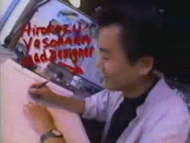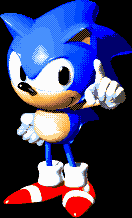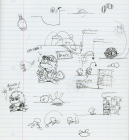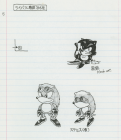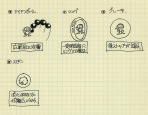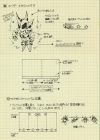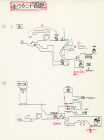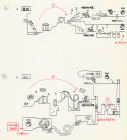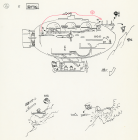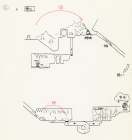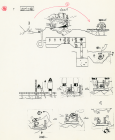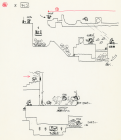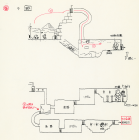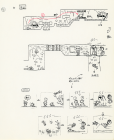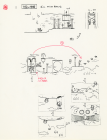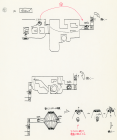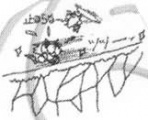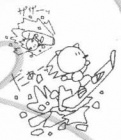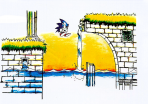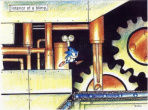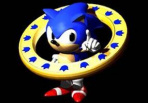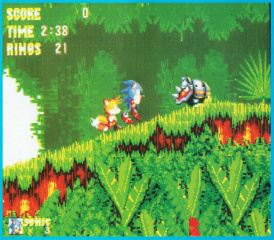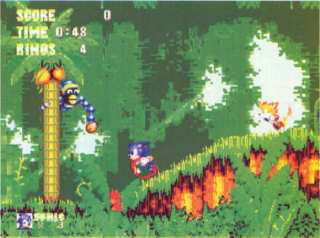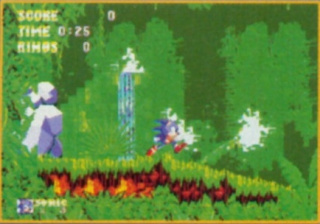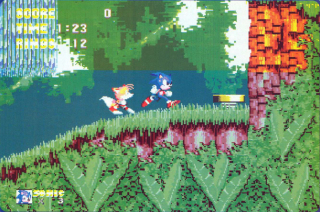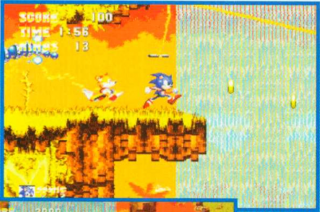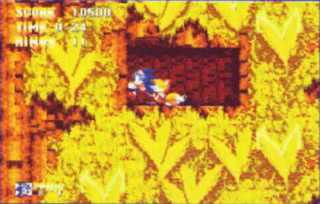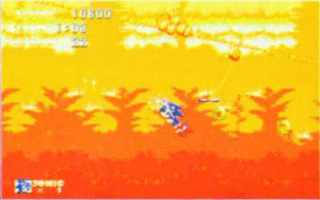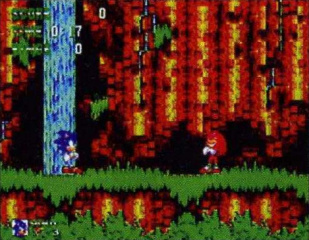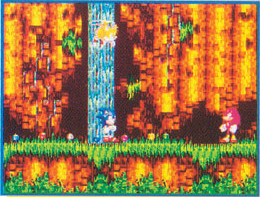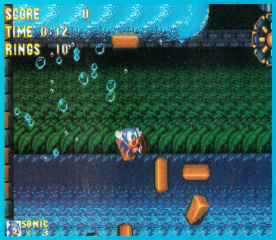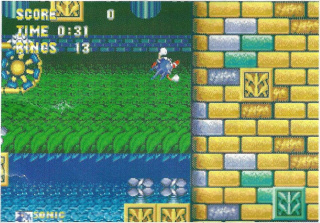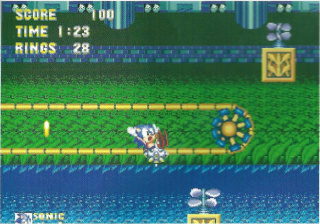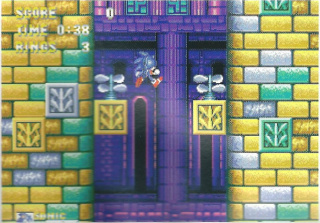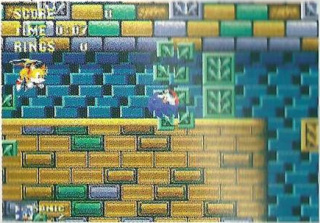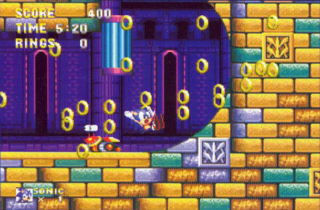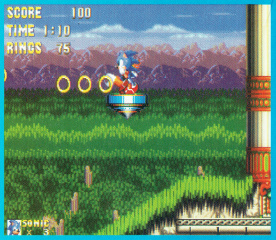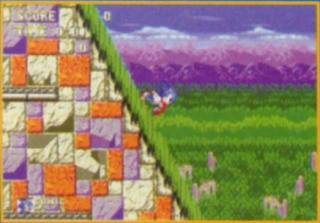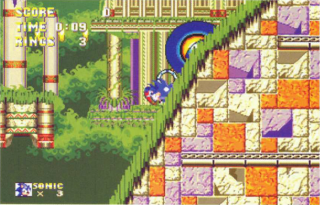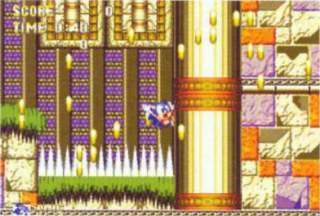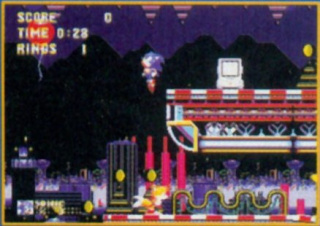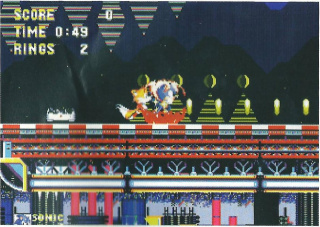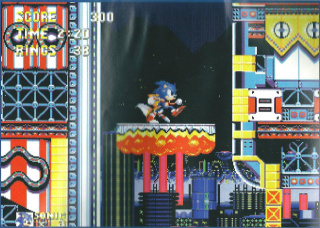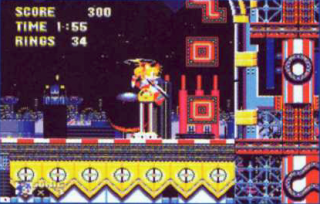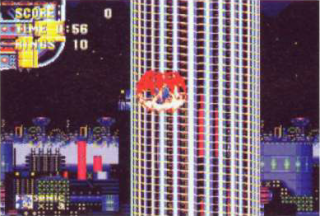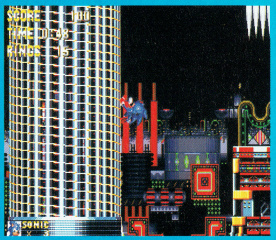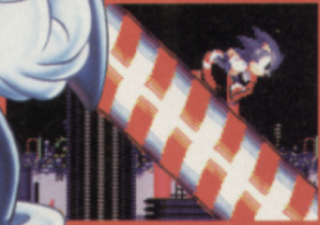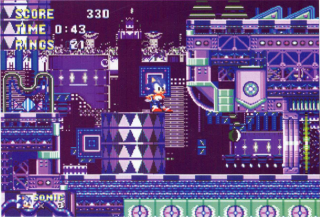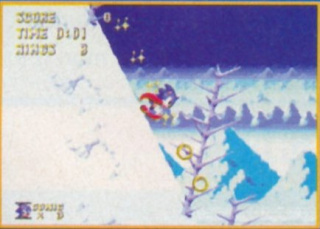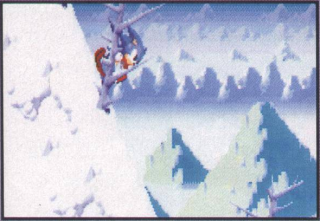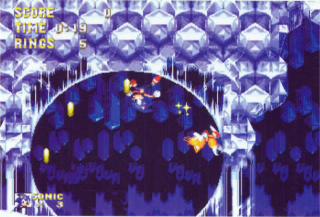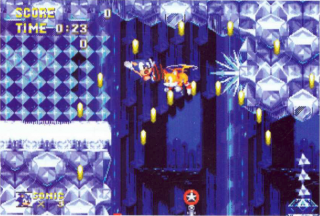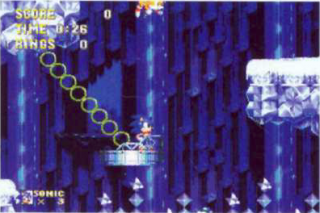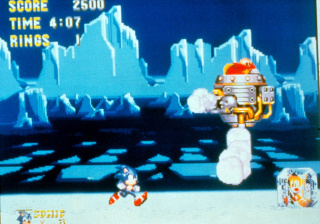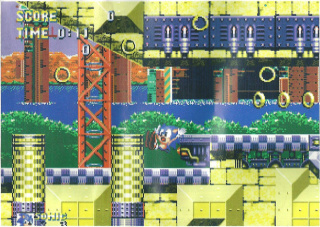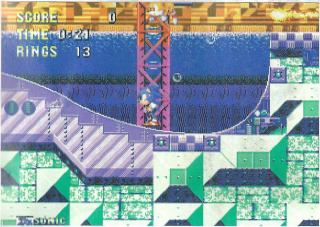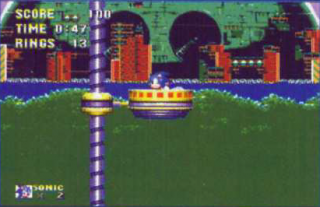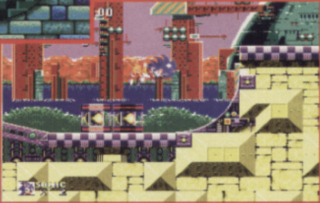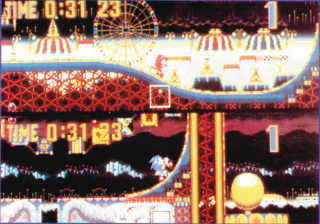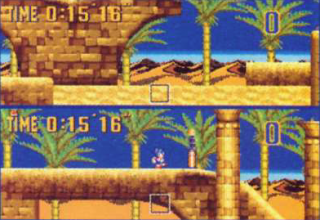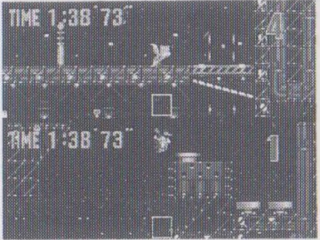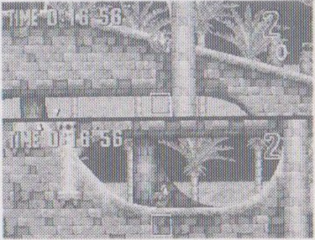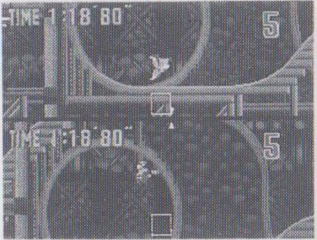Sonic the Hedgehog 3/Development
From Sonic Retro
- Back to: Sonic the Hedgehog 3.
Sonic the Hedgehog 3 and its sequel Sonic & Knuckles went through many ideas and changes during the development process. What follows is a collection of items related to the game's development.
Contents
Game Development
In the wake of Sonic the Hedgehog 2 and its tremendous success in the west, there was no doubt in anyone's mind that another sequel would be created in the franchise. Wanting to keep the ball rolling, Sega once again looked towards the Sega Technical Institute and the now-veteran game creators Yuji Naka and Hirokazu Yasuhara to create a third entry in the main numbered series. Fresh from the intense creation of the second game, Yuji Naka at first hit the same hesitation that he had when approached with Sonic 2, not wanting to simply work on the same game over and over again. He finally agreed to be a part of the project if he was allowed to work primarily with the Japanese-half of STI, hoping to avoid much of the drama that resulted during the last game because of the differences between the Japanese and American work culture. Also fishing for a promotion, Sega decided to give in to Naka's demands, knowing how important the game was and its almost assured success. Giving him the title of Producer, Naka was granted the freedom he had been looking for, once again embraced into the staff of Sega of Japan. Not wanting to leave the American side of STI in the dust, Sega gave them a separate Sonic the Hedgehog-related project to work on that would fill in a gap in scheduling between Sonic 2 and Sonic 3, Sonic the Hedgehog Spinball.
At first, work on Sonic the Hedgehog 3 was intended to be developed using a new technology Sega was working on with microprocessor producer Samsung. Looking for an answer to Nintendo's Super-FX Chip, Sega licensed the SSP1601 chip (meant to be dubbed the "Sega Virtua Processor") that would be placed in specific Sega Mega Drive cartridges, allowing rudimentary 3D graphics. With Naka's interest in taking the franchise in new directions, the original plan was to use the chip to create an isometric world for Sonic to run in (the perspective similar to what was used in Sonic Labyrinth and Sonic 3D: Flickies' Island) which would have resulted in a vastly different game. However, after 6 months working with the SVP chip,[1][2] Sega refused Sonic Team's demands, stating that the chip would not be ready to use before they wanted Sonic the Hedgehog 3 to hit store shelves. Instead, the development team decided to create another traditional two-dimensional platformer. In the end, the only title released by Sega to use the chip was the Mega Drive port of Virtua Racing. According to Naka, the glossy CG model of Sonic that appears on the title screen is a remnant of their time working with the SVP,[1][2] and that some of their ideas might be realized in the much later game Sonic Adventure.[1]
As the plans for the game were laid out, Yasuhara and Naka wanted to create a large, sprawling game, grander in scope than any Sonic title to date, essentially accomplishing what they had hoped to do in Sonic the Hedgehog 2 but couldn't due to time constraints. Roger Hector, a director at STI and Executive Coordinator for Sonic 3 and Sonic & Knuckles, knew almost from the start that such an ambitious project might be impossible in the form they wanted to take it.
| “ | There were so many creative ideas that it would take too much time to develop such a massive project. The team brainstormed up two games' worth of material initially and it was decided, before the Alpha stage I think, that it would make more sense to split it into two games. | „ |
| — Roger Hector, Executive Coordinator, Sonic 3 & Knuckles[3] | ||
Though it was decided early on that the game may be needed to be split in half, what form this would take was still unknown, material for both games developed concurrently.
Many new members were sent over to STI from Japan, including young game designer Takashi Iizuka. Iizuka had enjoyed Sonic 2, but one of his ideas to improve on its concept had to with multiple playable characters.[4] Sonic 2 had introduced Tails, but playing as the character didn't offer any substantial differences from playing as Sonic. The solution was to give each playable character in the game different unique abilities and have their progressions through zones be slightly different from each other.[4]
It was decided that a rival to Sonic would be introduced. Originally conceived as a hedgehog, this would change after yet another internal competition was held to decide what form they would take. Takashi Yuda, another developer who moved to America to work on the game,[5] would end up winning with his design, Knuckles the Echidna. When the design was presented to a focus group composed of children, the design was taken favorably except for one element: the character's color. Meant to originally be green,[5] the research from the group led to his hue being changed to the now-classic red echidna. While the design of the character was being molded, Sega was in the process of working out a merchandising deal with Nike. In a show of good will, a white swoosh was added to Knuckles, resembling that of the Nike logo. While the deal fell through, the markings on Knuckles remained, giving him the look that would make him stand out from the rest of the cast.
As development on Sonic 3 got underway, the team decided to take inspiration from the world around them, designing entire Zones from names of places and trips the group took together to get away from production for a couple days. Angel Island, for example, was named after an island off the coast of San Francisco where the team made the game, which was once a hub for immigrants coming to America. Carnival Night Zone was inspired by the many roving local carnivals that the group would see around the area, and IceCap Zone was derived from an often-visited relaxation spot for the team.
| “ | While developing, we went snowboarding a lot at a nearby resort. People kept getting injured though… (laugh) Originally, this stage was planned to begin after zone 8 (Flying Battery Zone). Sonic was going to break down the door from the airship and make a snowboard out of it on the way down. The other characters can fly, so they wouldn't appear in that event. | „ |
| — Yuji Naka, Producer, Sonic 3 & Knuckles | ||
As hinted at in the above quote, the fourteen Zones of Sonic the Hedgehog 3 were already laid out, the earlier levels given higher priority due to the game being split in half. As the release date for America drew closer, it was decided that Flying Battery Zone, once the fifth Zone, would be moved over to the sequel, the game ending at Launch Base Zone. Polishing up the six levels, the idea came as to how the two halves of the game would be presented. The first half, simply titled Sonic the Hedgehog 3, would be a game that could be standalone. However, inside the code for the game were numerous pointers and leftover data from the second half, placed there for a specific reason. Wanting people to be able to play the game as they intended, Sonic Team came up with the idea of "Lock-On Technology," which would make the next game released (titled Sonic & Knuckles) "lock on" to the previous title through a specially designed port in the cartridge. It was only with the two cartridges together that the true version of Sonic 3 could be played, with all three characters, bonus rounds, and the fourteen Special Stages.
Knowing that people would be essentially paying for the one game twice over, Sonic Team decided to try and extend the "backward compatibility" of the cartridge to their previous Sonic outings. Developing a special patch that allowed the game to connect to Sonic the Hedgehog 2, the public was given the option to run through the classic game with Knuckles the Echidna. The ability to play with Knuckles in the first Sonic the Hedgehog was also considered, but halted as time did not allow for the amount of work needed to make the character work properly in the game, the team focusing on the remainder of Sonic & Knuckles. Instead, the "Blue Sphere" mode was created, that allowed an almost limitless amount of Sonic 3-styled Special Stages to be played through when the first game was connected.
While in the west Sonic 3 was released in February, the game would not see release in Japan until May of that year. Though no official word was given on the delay, rumor was that Sega was planning on releasing a 24-megabit version of the cartridge in Japan, but instead, released the standard version that had been in Europe and the United States, unable to hold off any longer because of import shops selling the western copy of the game.[6] Years later, it was discovered that Sega, not content with only releasing Sonic 3 and Sonic & Knuckles separately, had planned on releasing a Sonic the Hedgehog 3 Limited Edition that would take the two halves and release them as a single cart, as was originally intended. While work on this version of the game continued for a while, it was ultimately shelved, the only public release of the game being in two parts. It is quite possible that Japan was originally meant to only have this "limited edition" released, but was changed at the last minute. Sonic & Knuckles and its Lock-On powers would be released in October in all regions, including Japan.
With the two parts finally out, much of the Japanese staff at STI decided to return to their native land, including Yuji Naka. Yasuhara, however, elected to remain in the United States. Though the reasons as to why are unknown, some rumors suggest that the legendary partnership between the two minds of Sonic had become strained, with Yasuhara not wanting to continue dealing with Naka. Whether or not this is true does not change the fact that Sonic & Knuckles truly marked the end of an era. Though he would have some input in Sonic 3D: Flickies Island, Sonic R, and the ill-fated Sonic X-treme, it was the swan song for the man who had directed the four main Mega Drive entries in the series. The Sonic Team name would live on, however, as Yuji Naka would reunite with Sonic creator Naoto Ohshima back in Japan, where the pair would spearhead such Sega Saturn titles as NiGHTS into Dreams and Burning Rangers, and eventually return to the Sonic franchise with the Dreamcast title Sonic Adventure.
Music
| |
Main article: Sonic the Hedgehog 3/Development/Music |
The music of Sonic the Hedgehog 3 stands as an ongoing conundrum for Sega due to certain executive decisions made during development. Due to the last-minute inclusion of the popular music artist Michael Jackson and his sound team, along with the consequences of his subsequent departure before the game's release, it is not fully understood how much of the soundtrack is currently owned by the company. As time passed, some of Sonic 3's development staff commented on the issue (some providing conflicting information), confirming Jackson's involvement in one of the most curious and complicated moments in the franchise's history.
Promotion
For the release of Sonic the Hedgehog 3, an active publicity campaign was put behind the game. Released on February 2nd in the United States, the release date was dubbed "Hedgehog Day" by marketing, to cash in on the fact that it also happened to be "Groundhog Day." From McDonald's toys to tie-ins with Lifesavers and Spaghetti-O's, Sonic was everywhere, all amping up for the title's premiere in the states. The festivities went into full swing when the game "officially" premiered in the town of Punxsutawney, Pennsylvania, the home of Groundhog Day. Bringing out the Macy's Thanksgiving Day Parade Sonic balloon, the game was ushered out in style, complete with miniature Sonic balloons for the kids, and kiosks set up in the local Junior High so everyone from the youngest kid obsessed with Sonic to the top hat-wearing guardians of the groundhog could experience Sonic 3 firsthand.[7]

In the United Kingdom, Sega reached out to pop group Right Said Fred to compose a song connected to the game. Entitled "Wonderman", the single was released with a music video utilizing Sonic the Hedgehog imagery as well as using Steve O'Donnell, one of the faces of Sega's advertising in Europe.[8] The track peaked on the U.K. Singles Chart at #55.
Sonic & Knuckles also met with its own push, a television special airing on the MTV Network. The special, called Inside "Sonic & Knuckles" but also referred to as Sonic & Knuckles Rock the Rock, was the finale of a videogame competition that had been occurring across the country. Sponsored by Sega, the program was hosted by Daisy Fuentes and Bill Bellamy. The collected finalists in the competition had to play through the first level of Sonic & Knuckles, the Mushroom Hill Zone, and collect as many rings as possible before reaching the end. Taking place on Alcatraz Island in the San Francisco Bay, the special also featured interviews with many of the people who worked at STI, including Roger Hector, Hirokazu Yasuhara, Victor Mercieca, Adrian Stephens, Howard Drossin, Kunitake Aoki, Chris Senn, and Dean Lester.
The game Sonic the Hedgehog 3 was also the first Sonic game in the west to offer an incentive to people who preordered the game, receiving a free copy of the music CD Sonic the Hedgehog Boom. Although paired with Sonic 3, the disc actually contained music from the American soundtrack of Sonic the Hedgehog CD and Sonic Spinball. In Japan, a "History of Sonic" VHS was given to those who preordered the game, just as a similar video was available to Japanese residents who had preordered Sonic the Hedgehog 2.
Concept art
Characters
Levels
Miscellaneous
An early render of Sonic from the Sonic 3 title screen created by Kunitake Aoki.
Prototype screenshots
Unlike Sonic the Hedgehog and Sonic the Hedgehog 2, very little was previewed of Sonic 3 before launch, possibly so as not to accidentally give away clues for Sonic & Knuckles. Very few magazines were given access to pre-release material, and it was originally questionable as to whether prototypes were given out - although the discovery of a prototype build confirmed that at least one prototype was given out to the press, which most of these screenshots were from.
Recurring themes include the use of Sonic the Hedgehog 2 sprites and a differing HUD, as well as some missing features like the snowboard in IceCap Zone.
Angel Island Zone
What seems to be a later prototype - Knuckles' green socks cause many problems for Sonic 3, and here they have turned the HUD green (while in the final, the HUD turns the socks yellow). Sonic has, by this point, reached his final design, although the Super Sonic fade-out is bugged, leaving the darkest shade of blue where the lightest should be, and vice-versa.
Hydrocity Zone
Hydrocity Zone sees the most differences to the final game, opting for a green flora background. It was initially thought by some that the water was handled differently too - in the final game a pseudo-3D effect simulating the surface of the water way into the distance is created depending on the camera's Y position. Here it seemed to be entirely missing, leading to the situation where a large pool of water in the background is seen underneath a large pool of water in the foreground. The discovery of a Sonic 3 prototype proved this to be false, however.
Marble Garden Zone
Carnival Night Zone
IceCap Zone
Launch Base Zone
Launch Base has notable palette differences - in Act 1, the water is blue, the sky is purple, the construction towers are darker, and the Death Egg is a little bit more green. This is actually consistent with the level's stage select icon. In Act 2, the mountains in the background are darker. Both acts also feature a different enemy palette line.
Competition Mode
Palette issues in the background of Desert Palace.
External links
- Sonic the Hedgehog 3 World Premier - Footage from the release of the game in Punxsutawney Pennsylvania, including interviews.
- MTV's Inside Sonic & Knuckles (Rock the Rock) - The MTV special hosted by Bill Bellamay and Daisy Fuentes showing the final round of the Sega-sponsored video game championship, as well as premiering Sonic & Knuckles.
- Sonic History Video - Promotional video for Sonic 3 detailing Sonic's origin and history up until that point.
References
- ↑ 1.0 1.1 1.2 [ssmjp, issue 1997-22, page 060 ssmjp, issue 1997-22, page 060]
- ↑ 2.0 2.1 https://shmuplations.com/sonic/
- ↑ Sonic 3 & Knuckles - Behind the Scenes (GamesTM issue 60)
- ↑ 4.0 4.1 [ssmjp, issue 1997-17, page 25 ssmjp, issue 1997-17, page 25]
- ↑ 5.0 5.1 https://sega.jp/fb/creators/vol_28/1.html (Wayback Machine: 2014-08-03 11:35)
- ↑ Game Preview - Sonic 3 (Famitsu, June 1994)
- ↑ http://video-game-ephemera.com/026.htm
- ↑ Sonic The Wonderman I'm Too Sexy - Sonic 3 (SEGA Magazine, 1994)
| Sonic the Hedgehog 3 | |
|---|---|
|
Main page (S3&K) Manuals Development |
show;hide
Competition Levels: Sub-Bosses: Level Bosses: Sonic 3C Prototypes: |
